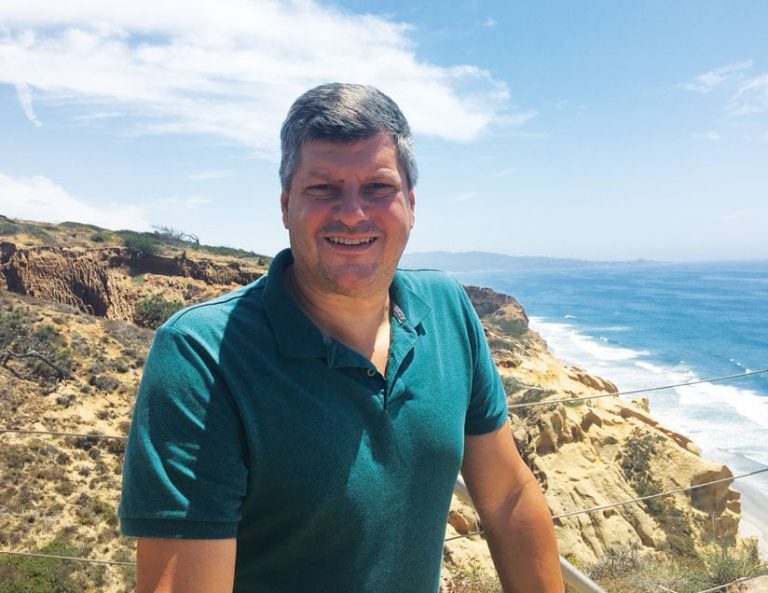Arthur Lembo’s wide-reaching and varied career mirrors, in many ways, how GIS has developed as a field.
He started out engrossed in the technical aspects of the discipline and wanted to show the world what the technology itself could do. Over the years, he’s realized that the essence of GIS doesn’t only lie in its technological intricacies but, rather, also in its ability to provide simple answers to complex questions. Lembo’s career has taken him from implementing large-scale, back end GIS projects to getting the technology to answer simple, public-facing questions to, now, preparing future generations to use the technology in innovative ways.
“To me, GIS has finally arrived,” he said. “It’s about seeing what other people don’t see and answering life’s challenging questions.”
When he was young, Lembo, who’s now professor of geography and geoscience at Salisbury University in Maryland, didn’t see geography—or GIS, for that matter—as something that could help him answer his own life’s questions.
“I was an apathetic kid in high school,” he said. “I didn’t have an interest in much of anything.”
During his freshman year at the State University of New York (SUNY) College at Oneonta, he needed an elective to begin fulfilling the requirements of his business major. A friend told him to take geography because it would be easy. Lembo was pretty sure he’d just have to memorize state capitals.

“After the first lecture, I was hooked,” Lembo recalled. “It was the engaging stories the professor told and how the problems geographers were solving were the problems people were facing on the planet. We looked at weather-related phenomena, economics, and demographics. I just saw that this was a great way to focus on where things were happening and, potentially, understand why those things were occurring.”
That same year, Lembo took a course in urban geography, where he got his first taste of GIS.
“I couldn’t believe that we were able to use data to visualize what was going on around us,” he said. “And remember, this was back in 1983. It was very caveman-like. I was using AUTOMAP 2, a precursor to ARC/INFO, on mainframe computers with line printers, and we used something called a SYMAP ruler to actually put coordinates on a map.”
Because he had to work deeply with the technology, stringing together his own commands and digging into the source code, Lembo became captivated by the information technology aspect of GIS. About six months after graduating from Oneonta, riding a wave of inspiration sparked by one of his professors, Paul Baumann, he entered the master’s of geography program at SUNY Buffalo. Advised there by the late professor Hugh Calkins, Lembo plunged into learning about what it meant to implement GIS within a computing environment.
“Hugh’s mentoring really moved my career more into systems integration than actually doing a lot more geography,” Lembo said.
His first job after getting his master’s degree was developing GIS at AT&T, and he later moved to Esri partner Bowne Management Systems, now known as the LiRo Group. For 10 years, he continued to set up enterprise GIS implementations for high-profile organizations—from Nassau County, Long Island, which is home to more than 1.3 million people, to the Long Island Rail Road (LIRR), one of the New York City area’s most important commuter rail systems. The work Lembo did for the LIRR helped earn him a Partner of the Year Award from Esri in 1999.
One of the most interesting projects Lembo worked on during his time in the private sector was helping to create the Name Your Own Price hotel service for the travel website Priceline. He said the Priceline staff continually challenged him by asking, “Could my grandma in Topeka, Kansas, use this without asking any questions?”
“We had to think about building tools that anyone could use without having to read a help manual,” said Lembo. And that was back in 1998. “All my other clients were beginning to use the internet, and I figured the natural thing to do was to create a GIS on the internet. What the Priceline guys got me to think about was, we don’t want a site to do 30 different things; we want a site to do one thing really well.”
That changed Lembo’s thinking and made him see how powerful spatially enabled apps could be on the internet.
“We were doing all this spatial analysis on the back end that users had no idea about,” he said. “As geographers, we’re always going to want to understand what’s happening behind the scenes. But the general public wants straightforward answers to very important questions, and we’re the ones who can give them those answers. They’re not interested in coordinate systems. That’s the stuff we do. We’re taking that and providing results for users to absorb.”
That’s what made the field of GIS fun to Lembo. But his thinking had also changed in another way: he’d decided that he wanted to reinvest in the community that gave him so much and teach at the university level.
“For me, my life was changed in college, and I wanted to give back to that environment,” he said. “I left a successful private sector career to go back and get my PhD so I could help students.”
With buy-in from his wife and children, Lembo got his PhD in environmental resource engineering at the SUNY College of Environmental Science and Forestry and started his academic career as a lecturer at Cornell University. While there, he won the SUNY Chancellor’s Award for Excellence in Teaching—the highest teaching award in the state—as well as the North American Colleges and Teachers of Agriculture organization’s Teaching Award of Merit and the Cornell faculty’s Innovation in Teaching Award.
“That was validating,” he said, referring to his decision to switch careers. “I applied the lessons I learned in the private sector to the classroom, which I think is important.”
After seven years at Cornell, he decided to pursue a tenure-track position and wound up at Salisbury. So two of his children grew up in upstate New York, while his youngest grew up in Maryland—and the whole family benefited from being deeply involved in student life.
“Those college students who spent so much time in our home became role models for my kids,” said Lembo. “And for some students—especially international students—we became their home away from home.”
As a professor, Lembo’s focus has always been on giving students the tools they need to learn GIS and spatial analysis and then helping them apply those skills to their own careers. In his quantitative analysis course, Lembo relies heavily on a textbook he cowrote—An Introduction to Statistical Problem Solving in Geography—to acquaint students with geographic research. In his GIS course, he has undergraduate students conduct original academic research.
“Many of them take their research right into graduate school,” said Lembo. “A number of them have even been hired on the spot when companies saw the research projects they did for the class.”
In 2018, Lembo received the Maryland Board of Regents’ Faculty Award for Excellence in Teaching. This was the second time he’d been given a state’s highest teaching honor.
“I think it’s really cool that there are all these disciplines out there that are known as the standard university disciplines, like English and biology, with great professors in them, yet now we’re seeing that the person identified as having a major contribution to academia is a geographer doing GIS,” said Lembo. “It’s really worthwhile and rewarding, and I’m so thankful that I do what I’m doing now.”
As he and his wife transition to life as empty nesters, Lembo is spending more time on hobbies that include golfing, surfing, fishing, and sailing. He’s also contemplating where to take his career from here.
“I’m teaching a lot of workshops on the technological aspects of GIS, and I have professionals come up to me afterward to ask a lot of questions,” he said. “After college, we don’t really have mentors anymore, so part of my transition is shifting my focus to being in those mentor relationships with other professionals.”
Drawing inspiration from his family, faith, and friends, it seems that Lembo will continue using GIS to answer people’s very important questions.

